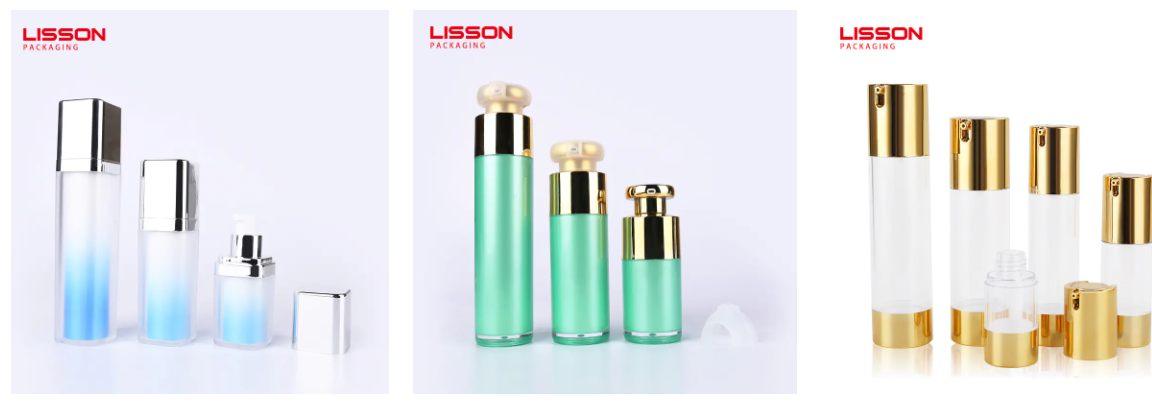The cosmetic packaging of household Cosmetic Tube products has also been innovated in order to improve the brand and, as a result, its wholesale cosmetic tube suppliers have had to face increased competitive pressure. The average consumer likes products that are aesthetically pleasing and easy to use in everyday life, and Cosmetic Tube packaging, which covers everything from skin care products to toothpaste, is popular because of this. Similarly, consumers will think, "What can I get from this new product?" This philosophy, in turn, encourages cosmetic and personal care manufacturers to continually introduce the latest products and packaging without increasing costs. In order to achieve this goal, manufacturers must continuously conduct research and development work for packaging suppliers, so that they can spend the least money and get the most. Beautifully decorated Cosmetic Tube packaging products attract attention.

Kelly Barry, director of market research at Freehold Resources, a New Jersey-based company that connects packaging customers with global suppliers, acknowledges the potential threat and competitiveness of Asia. However, he argues that foreign companies that want to expand their market for cosmetic tube packaging need only have a set of standards that are used by American suppliers. Barry, who has over 20 years of experience in the US Cosmetic Tube packaging industry, noted that the European trend towards innovation in packaging has been a positive boost to his business. Almost all production facilities for Cosmetic Tube packaging are designed, developed and manufactured by the European Cosmetic Tube industry. They listen to their customers and work closely with equipment manufacturers, making them well-deserved pioneers, whereas Asian suppliers have different business requirements. Mr. Barry continued, "The Asian manufacturer of Cosmetic Tube packaging has a very strong counterfeiting capability in terms of product development. They are eager to be a global supplier and do the best they can for their customers."
For cosmetic aluminum tube, there is a wide range of price pressures from South America, Europe and Asia. For this reason, Mr. Barry advises domestic cosmetic tube suppliers to control costs by reducing reject rates and increasing production, to deliver on promised delivery conditions, to provide the best service to customers, to produce more economically, to plan better, and to establish better relationships with overseas competitors.
For the plastic tube packaging industry in the United States, the main impact comes from the price pressure in Asia. Mr. Barry's advice to domestic suppliers is: try to shorten the delivery time, limit the cost, focus on the main customers, but also to improve the service level for smaller customers. In fact, the supplier of Cosmetic Tube packaging in America has more production capacity than the customer requested, so Mr Barry speculated that a wider range would be more attractive to the customer.
According to Mr Barry, Asia offered customers of Cosmetic Tube packaging lower rates. Lead times in Asia tend to be shorter than those in the United States for extrusion Cosmetic Tube packaging production. But they focus less on the innovation side and more on keeping customers happy.
Overseas competition is getting fiercer
Over the past decade, overseas packaging suppliers have been keeping pace with their North American competitors, and the pressure to compete has become more pronounced in recent years. Makers of household cosmetics, personal-care products and perfumes are increasingly turning to overseas suppliers in countries such as China, South Korea, India, Pakistan, Mexico and Costa Rica, where labor costs are lower than in North America. It is cheaper and faster to source packaging resources from these countries than to buy the same packaging resources from European and American manufacturers. This situation has led to more and more packaging suppliers facing competitive pressure, so most of the manufacturers have to adjust their core trade strategy; On the other hand, in order to maintain their interests in the overseas market, they have to take the way of cooperation with overseas companies.

For the end user, the household cosmetic tube packaging takes a long time from order to delivery and this has been an unresolved issue. Industry insiders say the impasse is caused by large toothpaste makers such as P&G and Colgate, whose products have so many customers that they account for so much of the world market, forcing other companies to look outside those markets. Of course, these are not the main reasons, but the overseas orders and prices are the fundamental.
Today makeup companies are looking overseas for partners with faster delivery times and lower prices (Cosmetic Tube Manufacturers), which is the market trade model of the capital society. The bottom line for the U.S. domestic market is that we have to find ways to make delivery times faster and produce better Cosmetic Tube packaging with modern patterns than our competitors." Mr. White added, "Typically, it costs more than $10 million to set up a production line, so I can't imagine a foreign company investing that kind of money in a new production line unless it has a big commission from a domestic company."
Copyright © 2025 Guangzhou Lisson® Plastic Co.Ltd | All Rights Reserved.
Hello, please leave your name and email here before chat online so that we won't miss your message and contact you smoothly.